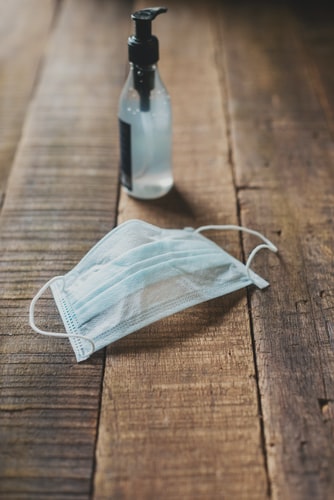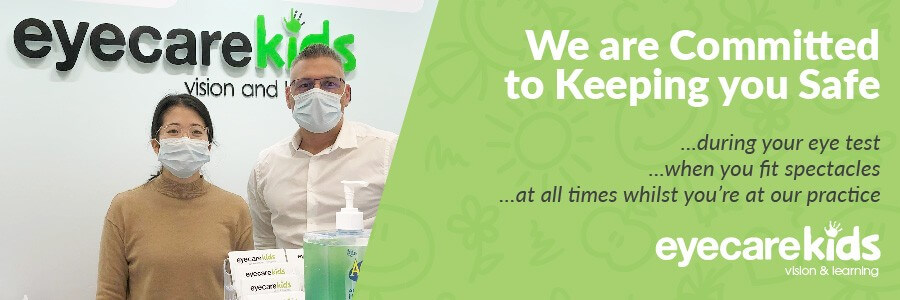Our eye care team works hard to fulfill our commitment to keep all our patients safe during their eye tests, but we have this one simple request—that our patients wear a mask when at the practice at all times, at least whilst the Coronavirus is still a threat.
Why Wearing a Mask Is a Must
A simulation of a patient coughing once during a slitlamp eye examination showed that respiratory droplets can spread up to five metres. The droplets were found on the slitlamp, breath shield and the practitioner including their hair, arms and hands, shoes and clothes. Smaller droplets can also be found on the walls and floors.
Watch the video here.
How the Simulation Was Done
 A cardiopulmonary resuscitation manikin was placed at the chin rest of a slitlamp. A small latex balloon, compressed with oxygen and 1.25 mL of washable fluorescent dye, was run through tubing inside the manikin’s oral cavity.
A cardiopulmonary resuscitation manikin was placed at the chin rest of a slitlamp. A small latex balloon, compressed with oxygen and 1.25 mL of washable fluorescent dye, was run through tubing inside the manikin’s oral cavity.
The balloon was inflated until it burst at 5 pounds per 72 square inches, which has been previously reported as the force for a voluntary cough and laryngeal cough reflex. The simulation was performed under ultraviolet light conditions (light-emitting diode 395NM ultraviolet flashlight) to visualize emission of fluorescent small particles.
Standard personal protective equipment and breath shields did not eliminate the simulated spread of droplets.
The original research, authors and sponsor of the simulation can be found here.
Close Proximity with Unmasked Patients Puts Our Optometrists at High Risk

The face-to-face proximity during the slitlamp examination places our optometrists at high risk of contracting various respiratory pathogens if by any chance a patient not wearing a mask suddenly coughs, and that patient has harboured SARS-CoV-2 in the asymptomatic or presymptomatic period.
This is why we use commercially available slitlamp barriers or breath shields as an added measure of protection and also disinfect them regularly.
However, if a patient who coughs is not wearing a mask, respiratory droplets can still find their way onto the equipment, barriers, and our optometrists, as seen in the simulation.
As added safety precautions, aside from regularly disinfecting exam rooms, we also regularly disinfect common areas, each spectacle or sunglass before and after a patient tries them on, practice frequent handwashing, and observe social distancing by limiting how many people are allowed at the practice at a time. Most importantly, we make it our protocol not to see patients who are feeling sick or unwell and request that they reschedule their appointment.
In these pandemic times, wearing a mask in public spaces—especially in enclosed spaces—is not only for personal protection but an act of common courtesy.
Let’s protect each other. I’ll wear my mask, you wear yours. 🙂

